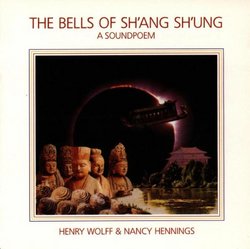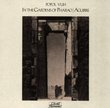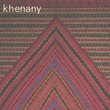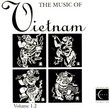| All Artists: Henry Wolff & Nancy Hennings Title: Tibetan Bells IV: The Bells of Sh'ang Sh'ung Members Wishing: 2 Total Copies: 0 Label: Celestial Harmonies Original Release Date: 1/1/1991 Re-Release Date: 10/16/1991 Genres: Dance & Electronic, Jazz, New Age, Pop Style: Meditation Number of Discs: 1 SwapaCD Credits: 1 UPCs: 013711303728, 013711303742, 001371130372 |
Search - Henry Wolff & Nancy Hennings :: Tibetan Bells IV: The Bells of Sh'ang Sh'ung
 | Henry Wolff & Nancy Hennings Tibetan Bells IV: The Bells of Sh'ang Sh'ung Genres: Dance & Electronic, Jazz, New Age, Pop
With Tibetan Bells IV: The Bells of Sh'ang Sh'ung, new trails are blazed by the musicians who created the classic Tibetan bells trilogy. Sh'ang Sh'ung is the Tibetan name for the fabled lost kingdom where the most precious... more » |
Larger Image |
CD Details
Synopsis
Product Description
With Tibetan Bells IV: The Bells of Sh'ang Sh'ung, new trails are blazed by the musicians who created the classic Tibetan bells trilogy. Sh'ang Sh'ung is the Tibetan name for the fabled lost kingdom where the most precious teachings of Buddhism were conceived, are concealed, and remain preserved to this day. On this recording, Henry Wolff and Nancy Hennings weave a metaphor in music, a sound poem depicting a journey to the mythic precincts of Sh'ang Sh'ung. Legends surrounding this remote and lost terrain tell of the punishing hardships that must be overcome to reach the city. Wolff and Hennings succeed in depicting the physical, mental, and spiritual tribulations of such a pilgrimage, and the awe inspiring spectacle of the Himalayan wilderness. The recording opens with the travelers striking across ranges of crystal cliffs and steep snowfields haunted by the Yeti, the legendary abominable snowmen. Seemingly insurmountable dangers are briefly forgotten at the sight of the sun rising over rose tinted glaciers and wind funneled plumes of snow careening against an azure sky the first hint of a spiritual splendor to come. The pilgrims continue to endure extreme mental disorientation, a breakdown of the time space continuum, and the repeated shattering and reassembling of consciousness before they finally reach their goal. The recording closes with a rejoicing populace escorting the newcomers triumphantly through the great gates of Sh'ang Sh'ung. While the purity of tone and long haunting echoes of the Tibetan bells remain central to the artists' vision, The Bells of Sh'ang Sh'ung makes use of other instruments, both Eastern and Western. The synthesizer, long considered the natural electronic counterpart to the magic resonance of the bells, adds additional depth and atmosphere to this ambitious venture. Consistent with previous Tibetan bells recordings, the studio itself is exploited as an ultra modern instrument in its own right.
Similar CDs
| Khenany Khenany Genres: International Music, New Age, Pop Label: Celestial Harmonies | |

 Track Listings (14) - Disc #1
Track Listings (14) - Disc #1



